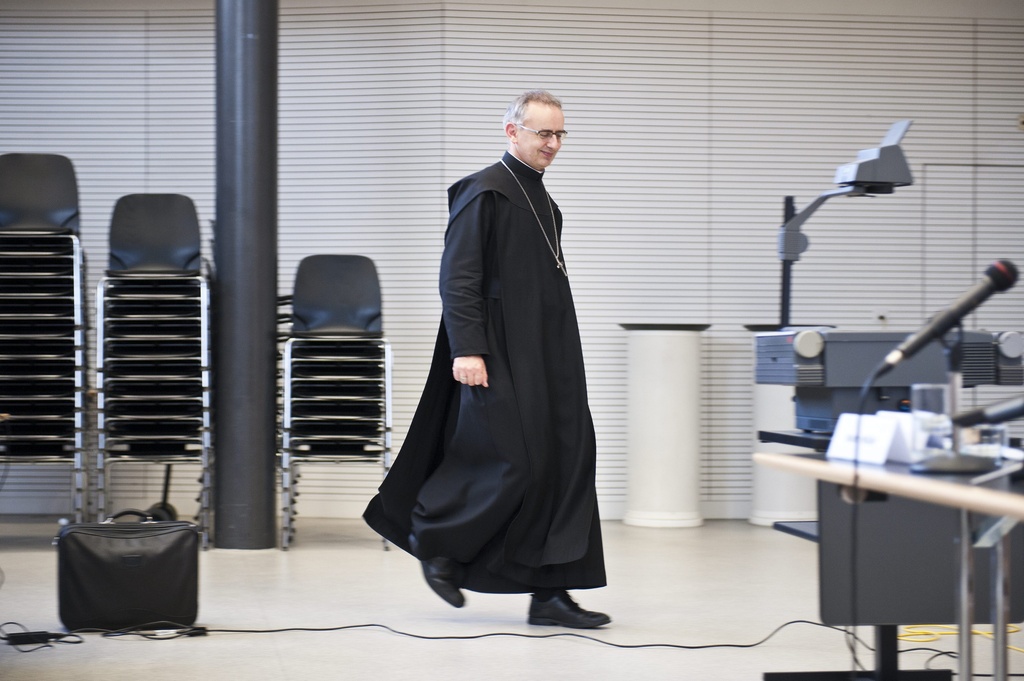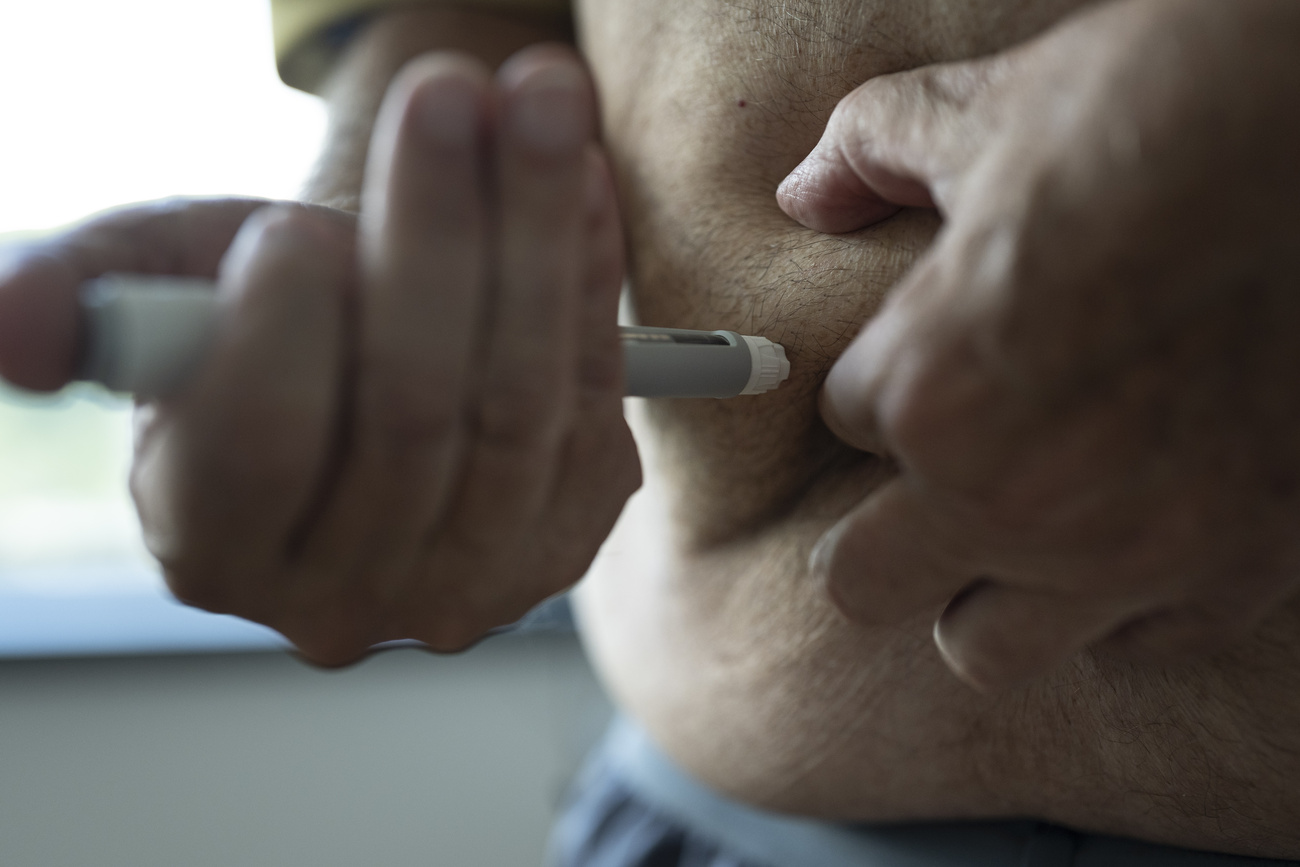
Catholic Church reveals scale of sex abuse

The Catholic Church in Switzerland has released new details of sexual abuse committed by priests and pastoral workers over the past 60 years.
Overall, 146 victims came forward to report abuse to Swiss dioceses in 2010 – the first year in which detailed statistics have been presented by the church. The abuse was carried out by 125 priests and lay clergy, an expert commission of the Swiss Bishops Conference said on Thursday.
Martin Werlen, the abbot of Einsiedeln, said it was still early days in the process but a big step had been taken in recent months towards breaking taboos about sexual abuse in the church.
The statistics broke down in more detail who the victims and perpetrators were and when the incidents had taken place since 1950. Abuse ranged from sexual harassment to rape. Most of the victims were teenage boys (25 per cent) and adult men (23 per cent). Another 20 per cent were children aged under 12.
Half of the incidents were carried out by parish priests and 26 per cent by ordained men.
Most of the abuse happened between 1950 and 1980. Ten per cent of cases took place during the past decade. The biggest dioceses of Basel and Chur were home to most of the abuse (70 per cent).
Confirmation of the abuse first came to light more than 16 months ago when the church announced cases reported from January-May 2010. Thursday’s statistics present a complete picture of reported abuse in that year.
“It should not be forgotten that behind these figures, are people who are suffering,” Werlen added. His abbey – an important place of pilgrimage in central Switzerland – became a focal point of abuse cases after incidents involving 40 victims and 15 monks emerged in January this year. These cases do not appear in the 2010 statistics.
Another two cases for 2011 were reported elsewhere in the cantons of Geneva and Vaud in February.
Not just a church issue
More cases are expected in future, according to Adrian von Kaenel, president of the church’s expert commission on sexual abuse in pastoral care.
“Unfortunately this phenomenon is a human phenomenon. It’s not just in the church. The offenders are from all ‘helping’ professions, like doctors and lawyers,” von Kaenel told swissinfo.ch.
But he expects the very old cases to drop off now. “We have had the peak, and I expect that it will settle down a little. But unfortunately there will always be new cases.”
Von Kaenel said prevention and sharing of information was starting to have an effect.
“I think the work has been significant. We have seen a certain success in these ten years that we [the commission] have existed.”
St Gallen Bishop Markus Büchell, who became involved in tackling the issue early on in 2002, said one of the main tasks now facing the church’s expert commission was dealing with specific cases and working on prevention.
“In prevention we are doing educational work among priests, integrating it into our training concept, distributing leaflets with information,” he told swissinfo.ch.
“It is working well and it is getting through to people, the pastoral workers but also parish secretaries, church officers, all those working in councils and commissions. Their awareness of the issue has grown strongly and for me that is a very important job that we’re doing, for society as a whole, too.”
Raising awareness
The Swiss Bishops Conference’s revised 2010 guidelines for dioceses on preventing sexual abuse outlines the need for transparency, wide background checks on new clergy, training in self-awareness and power, the “serious” tackling of sexual issues, as well as ongoing supervision.
But Werlen noted that the training and vetting of new members wouldn’t be enough prevention for the future.
“It’s a matter of increasing awareness among everyone, not only the people who have responsibilities in the church, but everyone. The more people are made aware, the less it’s a taboo,” he told swissinfo.ch.
“As long as sexual abuse is a taboo, the offenders will continue to be protected. They know nothing can happen. As long as it’s a taboo, the people who suffer abuse dare not go public. They think no one will believe them. The main task we have is raising awareness.”
Victims
29 children under the age of 12
15 girls aged 12-16
36 boys aged 12-16
22 adult women
34 adult men
(10 unknown)
Offenders
62 secular priests
32 ordained men
4 ordained women
3 male lay theologians
3 church staff
(21 unknown)
Time of offences
22 cases from 1950-1960
27 cases from 1960-1970
22 cases from 1970-1980
9 cases from 1980-1990
9 cases from 1990-2000
13 cases from 2000-2010
(22 unknown)
(Source: Expert commission report of the Swiss Bishops Conference 2010)
44 investigations underway
43 victims did not want to take further steps
36 offenders dead
21 information insufficient to proceed further
12 church procedures underway
9 criminal proceedings pending or finished
4 cases reported to authorities
2 offenders sentenced
1 offender came forward
1 church suspension
1 priesthood resignation
1 offender is old and no longer in ministry
1 offender no longer in the diocese

In compliance with the JTI standards
More: SWI swissinfo.ch certified by the Journalism Trust Initiative
































You can find an overview of ongoing debates with our journalists here . Please join us!
If you want to start a conversation about a topic raised in this article or want to report factual errors, email us at english@swissinfo.ch.